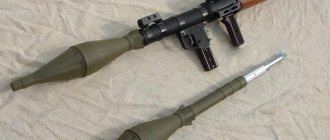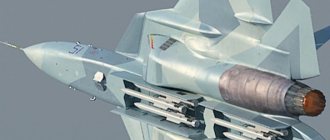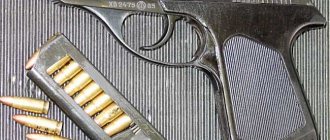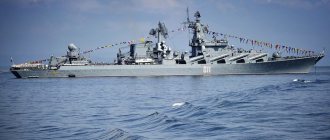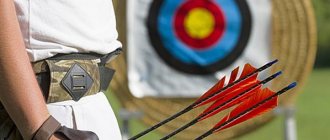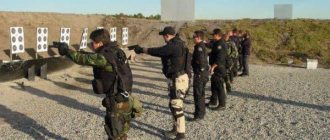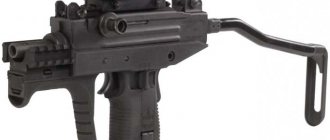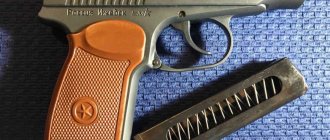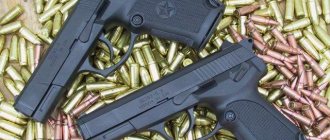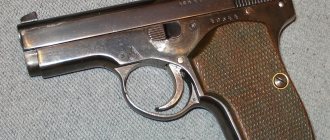Gun
Existing standing pistol shooting positions can be divided into one-handed and two-handed shooting positions.
A sports stance for pistol shooting requires rigidly securing the joints, relaxing the muscles and accurately aiming the weapon at the target. The shooter stands sideways to the target, raises his hand with the pistol and points it at the target. The other hand is freely lowered or placed behind the back.
This position allows you to make an accurate shot, because the distance from the pupil to the rear sight is greatest and the rear sight and front sight are visible quite sharply, this makes aiming the most accurate. Aiming in this position is affected by all sorts of stimuli, from elementary tremor to sharp gusts of wind. In addition, the sideways position, although it reduces the area of the shooter’s figure, makes him more vulnerable to enemy bullets. The following stance will be more practical for close combat. The shooter stands in the basic hand-to-hand combat stance, the pistol is held with one hand in line with the eyes, the arm is slightly bent at the elbow.
In such a stance, there is no need to change body position to transfer a weapon from the left hand to the right. It is also easy to assume a two-handed shooting position. The ability to shoot with both the left and right hand is important when taking an advantageous position. For example, when firing through a doorway or from around the corner of a building. If the shooting space is on the left, then the greatest protection is provided by a left-sided stance, and vice versa, if the space is on the right - a right-sided stance.
The two-handed shooting position has several options. If you need to quickly move after shooting, a left- or right-handed stance is suitable for this. It is accepted as follows: in the basic stance, the shooter moves his right leg forward approximately the length of the leg from toe to knee and the width from the hand to the bent elbow. From this stance it is easy to move into the position for shooting from the knee and prone.
When there is less opportunity for movement, but there is a need to transfer fire along the front, a frontal stance is preferable. To accept it, the shooter takes a basic stance and takes the weapon with a two-handed shooting grip at eye level.
Shooting from a machine gun
In the classic position, the shooter stands sideways to the direction of fire, the legs, slightly bent at the knees, are rigidly fixed with muscles that are equally tense. The torso bends slightly back at the lower back and turns in the direction of shooting. The hip joints are rigidly fixed.
The left hand, supporting the weapon, rests on the ribs of the left side, its elbow rests on the iliac crest of the pelvic bone or on an element of equipment (pouch, waist pouch, special roller, etc.). The right hand grips the pistol grip tightly without unnecessary tension. It is better to lower your elbow along your right side. This position reduces the size of the shooter. The shoulders are slightly raised so that the sights are at the level of the head, without excessively tilting it. The butt of the weapon rests comfortably on the shoulder socket (if the shooter is not wearing special equipment such as body armor, rigid unloading, etc.).
The cheek touches the butt or is near it. In this position, it is difficult to transfer fire to large angles, especially to the left (for a left-sided stance), since the body already has a slight bend to the left side, and the left leg is moved forward. It is also difficult to quickly move in any direction from this position. All this limits the use of this stance in close combat. Another option for shooting while standing is more practical.
To assume the position, you must stand in a right-sided (left-sided) stance. The position of the legs and torso is identical to the position in hand-to-hand combat. The butt is pressed to the shoulder. The left hand holds the weapon by the forend or a special handle, the right hand clasps the pistol grip. In this position, aiming at the target is faster, although with less accuracy.
Fire can be transferred to larger angles and at higher speeds. When shooting, you can look with both eyes, left or right, depending on the situation. Taking into account the distance to the target, the shooter can make precise aiming when vision is concentrated on the front sight, medium when the situation is clearly visible and the front sight is blurry, and fast when the direction of the weapon is controlled by peripheral vision in the direction of the barrel.
The main elements of the stance generally replicate the pistol version - it is also important to maintain balance, control recoil and the position of the limbs. But, unlike short-barreled weapons, a carbine has a large weight and dimensions, which must be taken into account when shooting.
Think pistol rack. The feet are placed approximately shoulder-width apart (a little wider is possible).
One leg should be slightly in front of the other (for a right-hander - the left leg, for a left-hander - the right).
It is important to control your balance both when bending forward-backward and left-right.
The legs bend slightly at the knees, thereby increasing your stability and allowing you to quickly change body position if necessary.
The upper body is slightly inclined towards the target. This will help dampen recoil by preventing your body from leaning too far back when firing. But you should not tilt your body forward too much - excessive tilt can lead to loss of balance, especially with a large mass of the weapon and a small mass of the shooter. The significant weight of the carabiner can also cause a person to instinctively lean back, trying to shift the center of gravity evenly to the pelvis and straight back. This should be avoided - the center of mass should be approximately in the middle of the imaginary line connecting the feet.
The shoulders are slightly raised for easier aiming and move forward relative to the chest. It’s as if you are grouped together, forming a sloping silhouette. You should not tilt your head too much towards the weapon - it should rather be pressed into your raised shoulders, allowing the sights to be at eye level.
It is important to point your elbows down, trying not to protrude too much beyond the dimensions of your body - if they are placed to the sides, they can make it difficult to move, cause painful injuries when working indoors, and also simply give you away to the enemy. You should strive to reduce your size as much as possible, becoming a smaller and more difficult target for the enemy. The elbow of your dominant hand should be almost resting on your ribs. The elbow of the second hand should also look down, while the forearm can be slightly pressed against the magazine (if there is one).
The dominant hand should grip the pistol grip tightly, but without unnecessary tension. The second hand holds (supports) the weapon by the fore-end. If the length of the limbs and the parameters of the weapon do not allow you to reach the forend, support can be provided by wrapping your hand around the magazine and the magazine well (if any). However, you should not overuse this, especially on smooth-bore carbines, since misalignment of the magazine (due to holding it) can lead to problems with feeding cartridges.
Also a convenient aid is the tactical handle, which is installed perpendicular to the barrel or at an angle, providing a reliable and comfortable hold of the weapon.
The butt should be placed comfortably, resting it on the upper part of the chest, slightly offset from the center, in the so-called “shoulder pocket” (if you try to form a stance without unloading and other hard equipment, you will feel that under the collarbone, between the center of the sternum and the shoulder joint , a small hollow is formed). It is necessary to ensure a tight fit of the heel of the butt to the body, without allowing the upper or lower part to stick at an angle into the muscle - this way the butt will be evenly, with its entire surface, as if
press into the body, which will provide the best recoil absorption. It is important to ensure that the weapon does not rest against the collarbone, which can cause serious injury. And also remember that an incorrectly or insufficiently pressed buttstock to the body can cause not only pain and bruises, but also negatively affect the operation of the automation of your weapon - the recoil energy acting on the bolt frame for reloading the weapon also affects the weapon in general, and if you allow it to move, then, with small amounts of gunpowder (and correspondingly weak recoil), the relative displacement of the bolt may not be enough to extract the cartridge case and cock the mainspring.
We should also not forget about the individual characteristics of the shooter - given the obvious requirement for the partisan to be able to adapt to any conditions and material support, it is important to try to select a weapon and form a stance in order to create comfortable conditions for shooting at least at first, gradually complicating the conditions and tasks .
In this article, we examined only the basic principles of holding a long gun, emphasizing the importance of the main points that are relevant in many other stances. In the future, by changing just a couple of elements, you can easily move from this frontal position to the side position with many variations, as well as to various sitting and lying positions, which we will devote a separate article to.
Gun
When taking a kneeling position, the shooter sits on the heel of the right (left) leg, with most of the weight distributed between the knee and the heel of this leg. The legs are at an angle close to 90. When shooting from a pistol, the position of the hands can be the same as when shooting while standing. This position allows you to quickly aim the weapon at the target and transfer fire. A position is also possible when the left (right) hand rests on the knee with the hole behind the elbow, and the palm supports the pistol grip from below. The right (left) hand is straightened at the elbow and holds the pistol with a normal grip.
Preparing for shooting from various positions
Questions are practiced during a fire lesson at training site No. 2
Training of personnel in preparing to fire from various positions is organized by the training leader on site in a single-rank formation simultaneously with all personnel of the stream.
To do this, he first shows in general, and then in sections, the sequence of preparation for shooting from various positions, the procedure for unloading and inspecting the weapon, and the technique for executing the “Stand up” command after shooting from a prone position. During the demonstration, the lesson leader commands himself, makes reports and explains his actions.
Learning actions at the firing line is carried out in divisions. After each count, the lesson leader monitors the correctness of the students’ actions and eliminates any deficiencies noted. In general, you should move on to training the position for shooting from various positions only after the technique has been worked out without errors in the divisions.
Preparing to fire a machine gun
The machine gunner is prepared to fire on command or independently. During training sessions, the command to prepare to fire can be given separately, for example: “To the line of opening fire, Step - March,” and then “Load.” If necessary, the firing position is indicated before the “Load” command.
Preparation for shooting includes taking the position for shooting and loading the machine gun.
The procedure for taking a prone position for shooting from a machine gun: a – the machine gunner leans on his left knee and left hand; b – the machine gun is held by the forearm with the left hand
Assuming a prone shooting position . If the machine gun is in the “on the belt” position, move your right hand along the belt slightly upward and, removing the machine gun from your shoulder, grab it with your left hand by the trigger guard and receiver, then take the machine gun with your right hand by the receiver lining and the fore-end with the muzzle part forward.
At the same time, take a full step with your right foot forward and slightly to the right. Leaning forward, lower yourself to your left knee and place your left hand on the ground in front of you, fingers pointing to the right.
Then, leaning successively on the thigh of your left leg and the forearm of your left hand, lie on your left side and quickly turn onto your stomach, spreading your legs slightly to the sides with your toes out; At the same time, place the machine gun with the fore-end on the palm of your left hand.
Position for shooting from the knee without using a belt and using a machine belt
Standing shooting position without using a belt and using a machine belt
Joining a store
The machine is set to safety
Getting into a kneeling shooting position
If the machine gun is in the “on the belt” position, take the machine gun in your right hand by the barrel guard and fore-end with the muzzle forward and at the same time, putting your right leg back, lower yourself onto your right knee and sit on your heel.
The shin of the left leg should remain in a vertical position, and the hips should form an angle close to a right angle. Place the machine gun with the fore-end in your left hand, pointing it towards the target.
When taking a shooting position with a machine gun in the “chest” position, it is allowed not to remove the belt from the neck, but to use it to more firmly hold the machine gun when shooting.
Assuming a standing shooting position . If the machine gun is in the “on the belt” position, turn half a turn to the right in relation to the direction towards the target and, without placing your left leg, set it to the left approximately shoulder width apart, as is more convenient for the machine gunner, while distributing the weight of the body evenly on both legs. At the same time, moving your right hand along the belt slightly upward, remove the machine gun from your shoulder and, picking it up with your left hand from below by the fore-end and receiver lining, vigorously push it forward with the muzzle towards the target.
When taking a shooting position with a machine gun in the “chest” position, it is allowed not to remove the belt from the neck, but to use it to more firmly hold the machine gun when shooting.
Loading the machine:
— attach an equipped magazine to the machine gun, if it was not previously attached to it;
— remove the machine from the safety lock;
— put the translator on the required type of fire;
- vigorously pull the bolt frame back to full strength and release it;
- put the safety on the machine gun if there is no immediate opening of fire or the command “fire” is not followed, and move your right hand to the pistol grip.
Tags: fire training
Machine
When shooting from a long-barreled weapon, the left (right) hand holds the weapon by the fore-end or a special handle, resting the ulnar fossa on the knee, while changing the position of the leg in front, you can change the position of the weapon in height. The right (left) hand holds the pistol grip in the same way as when shooting while standing. As when shooting standing, the butt rests on the shoulder.
When the shooting distance is short, the weapon can be held as if shooting standing (without support on the knee). If cover allows, the shooter does without resting the gluteal muscle on the heel, straightening the back leg at the level of the pelvis. In this position, the possibility of maneuvering fire, changing shooting positions and moving behind another cover increases significantly.
Shooting prone makes the shooter a small target and allows for the greatest stability of the weapon.
Gun
When shooting a pistol while lying on his stomach, the shooter can hold the weapon with either two hands or one. When holding with both hands, the shooter rests his elbows on the surface, aligning the sighting device with the eyes and the target on the same line.
When holding a weapon with one hand, the free hand rests with the forearm on the surface, and the hand with the weapon may or may not rest with the elbow on the surface, depending on the conditions. It is important to note that when gripping with two hands or one with the elbow resting on the surface, it is significantly more difficult to transfer fire to large angles, and it is impossible to do it quickly at all. In such cases, shooting with one hand is applicable.
The fire can be transferred much faster, but the position itself is very uncomfortable due to the tension in the muscles of the arm and shoulder girdle. To carry out the transfer of fire and avoid an awkward body position, it is advisable to roll onto the appropriate side.
Lying on your side with a pistol is characterized by a horizontally rotated position of the sighting devices. The neck muscles also receive additional tension.
The supine position allows you to fire towards your legs. In this position, the legs are slightly spread and bent. The body and head are raised to an amount that allows visual control of the weapon and the target. It is more convenient to hold the weapon with a two-handed grip. When shooting from this position, you must watch your legs so that when transferring fire they do not fall under the trajectory of the bullet.
Lying on your back you can also fire towards the head. To do this, you need to tilt your head back as much as possible, move your hands holding the weapon behind your head so that your eyes - sighting devices - target are on the same line.
Shooting from a machine gun while lying down
